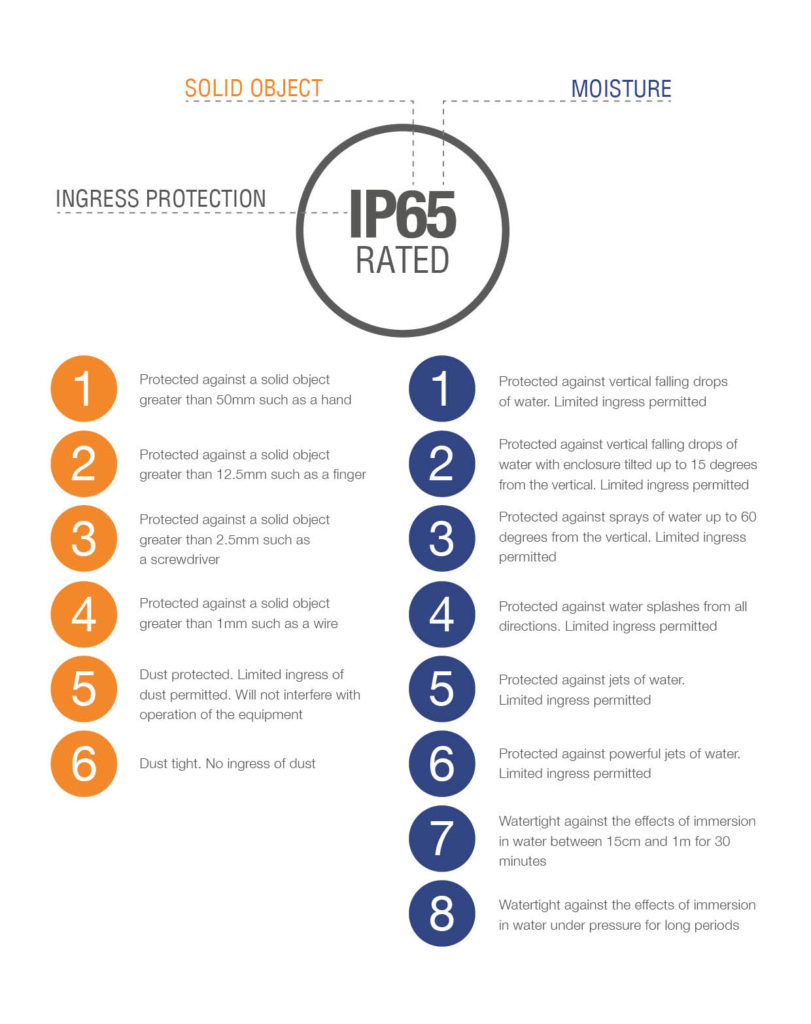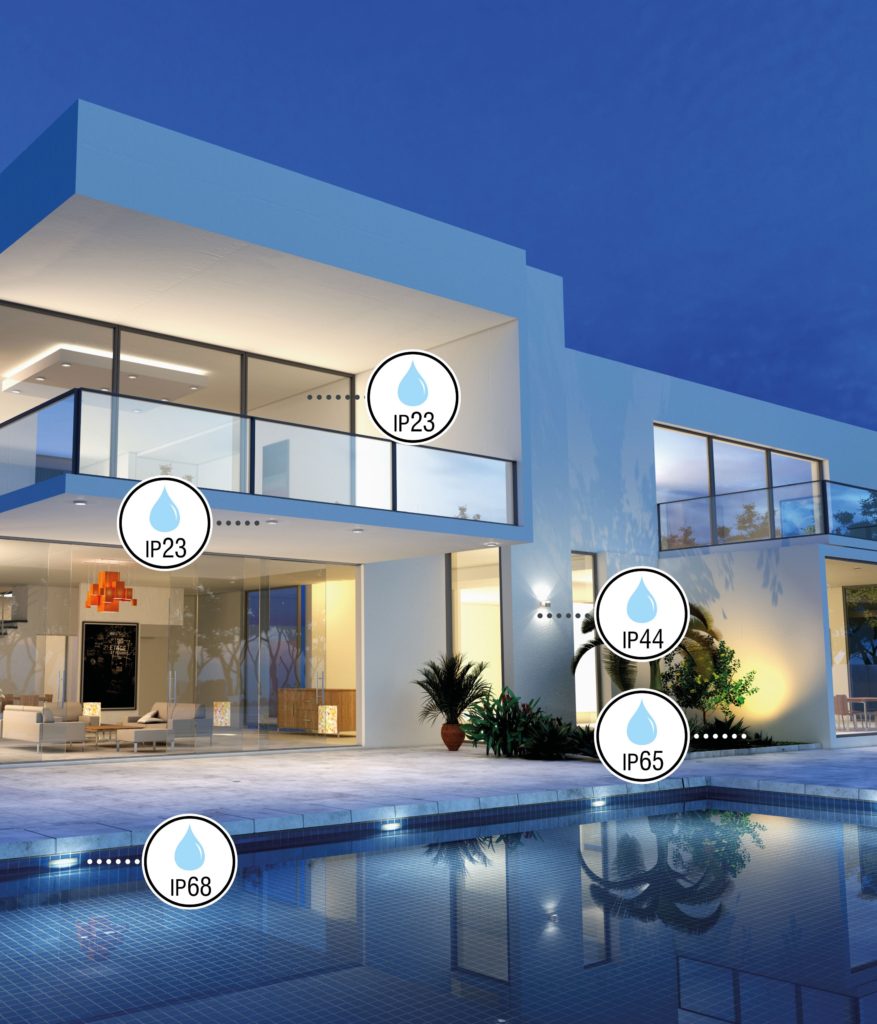”What is IP Rating?” – I hear you ask. I can guarantee you, you won’t be the first or last to pose that question. Though it’s common terminology in the lighting Trade, IP, UP and fire ratings can cause a world of confusion to anyone simply wishing to know if their lights are suitable for outdoor use, to name an example.
When lights have an IP Rating, this correlates to the degree of protection a light feature has against solid objects and water. At National Lighting, we know the importance of Ratings and how they are significant. They indicate what lights can be used in spaces full of moisture, such as bathrooms, utility rooms and all sorts of outdoor areas. When applied incorrectly, be prepared for your en-suite light to give up soon after you switch on that shower tap, leaving you (literally) in the dark.
Written as IPXX, the first ‘X’ defines the level of protection that the light feature has from dust. The second ‘X’ defines the level of protection the light has from moisture e.g. water.

In most cases, when lights are displayed with a rating of IP44 or above, they are suitable for the majority of locations. A rating below IP40, means limited water and dust protection. Those lights should be fitted in dry areas. We do not recommend using lighting in bathrooms and other ‘wet’ areas such as your garden, with a rating below IP44.
For commercial properties, National Lighting offers wall and ground fittings with improved seals. These lights have a higher rating of IP65 to IP68. Meaning they are resilient against most weather condition England has to offer (named storms excluded!).

Author’s Note: While writing this article, the one thing I learned and the one thing I advise anyone reading who’s not from the lighting trade to remember, is that these ratings are not there to confuse you but are here to help you. You really only need to remember one thing: In these stormy winter months, the higher the number of IP, the better the lighting protection.
1 Comment
Comments are closed.

Amazing! Thank you for explaining 😄